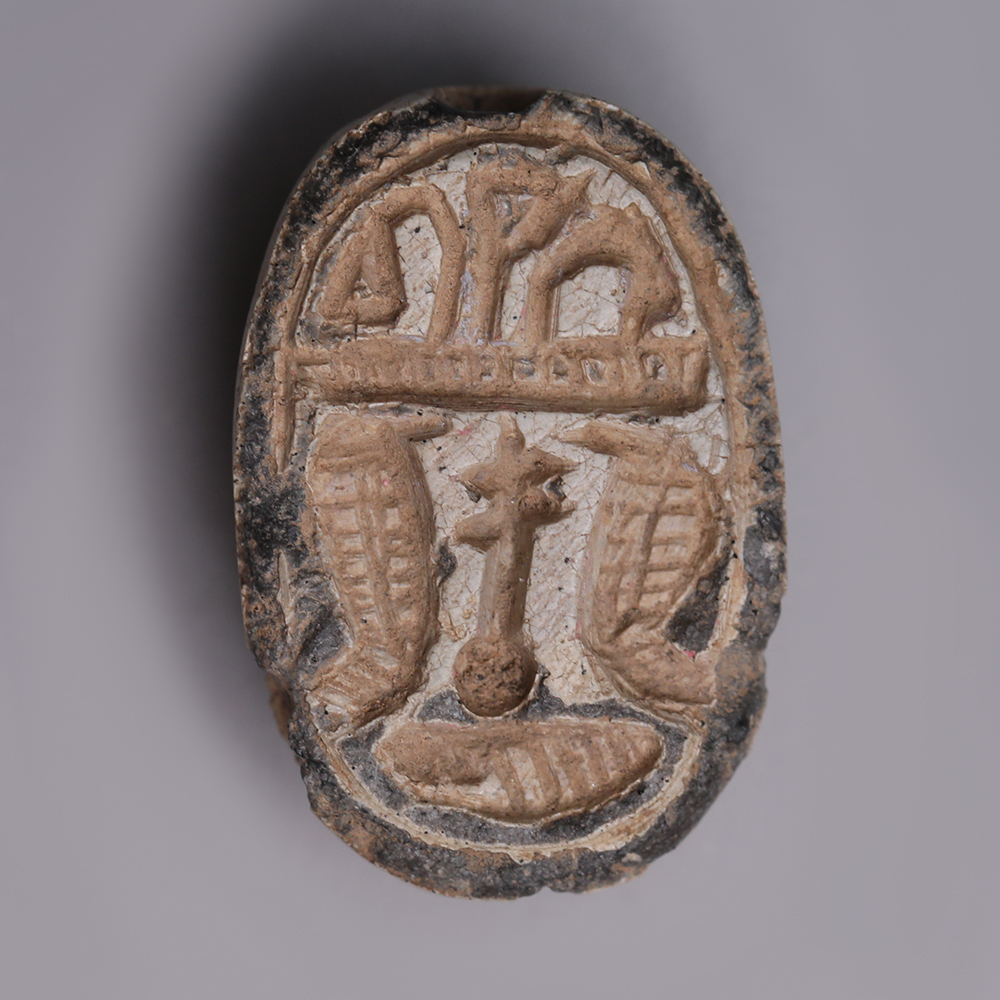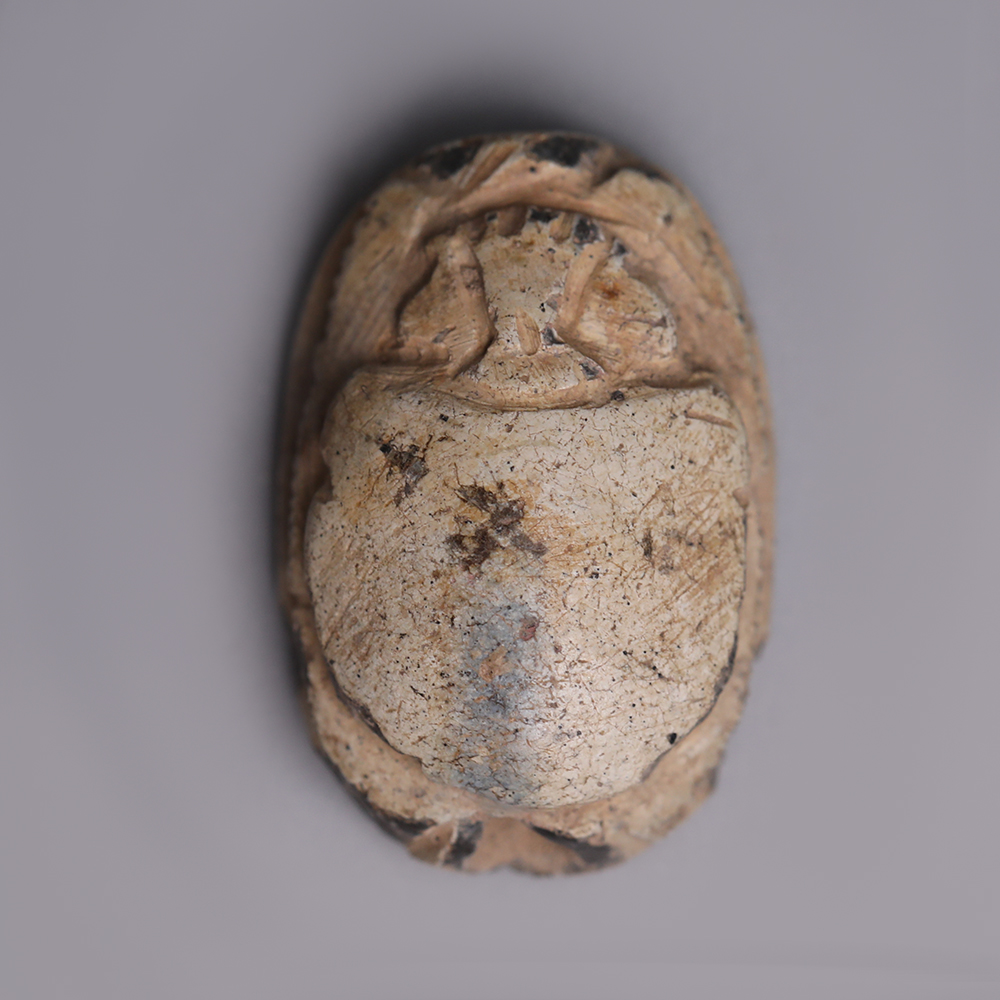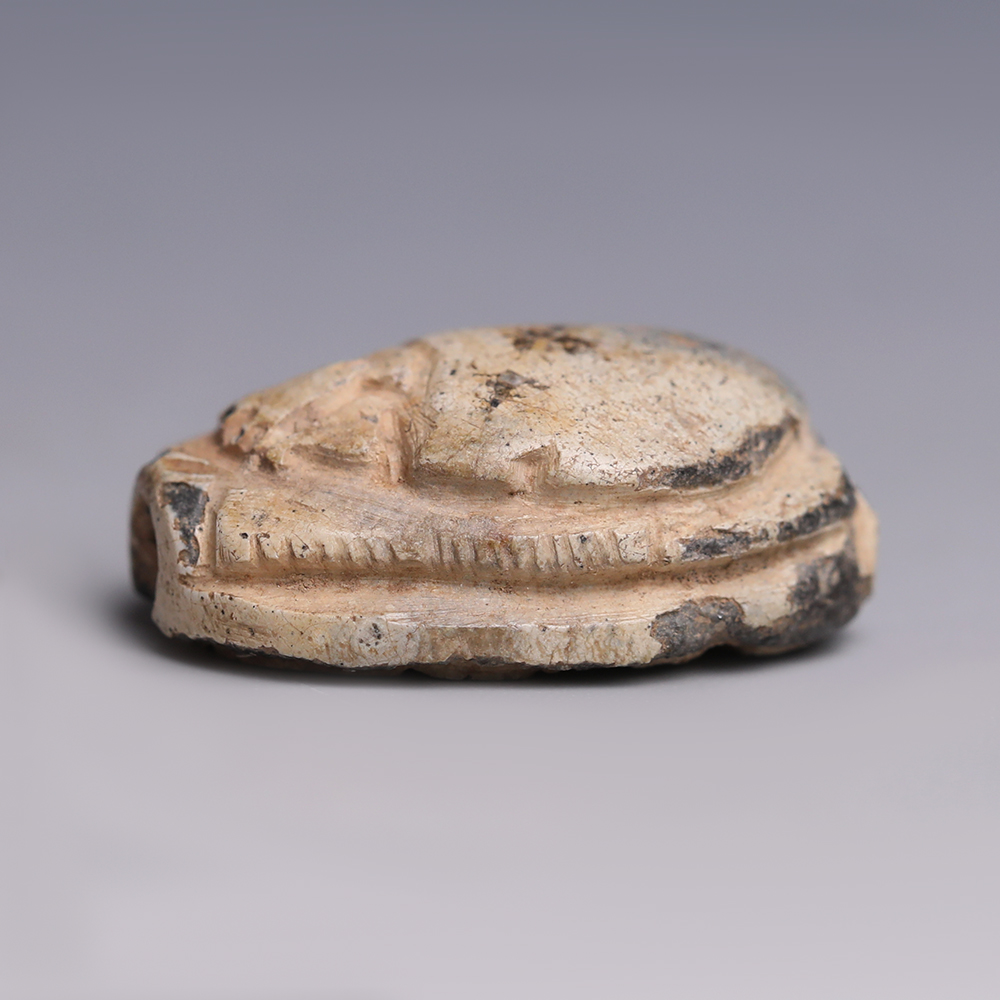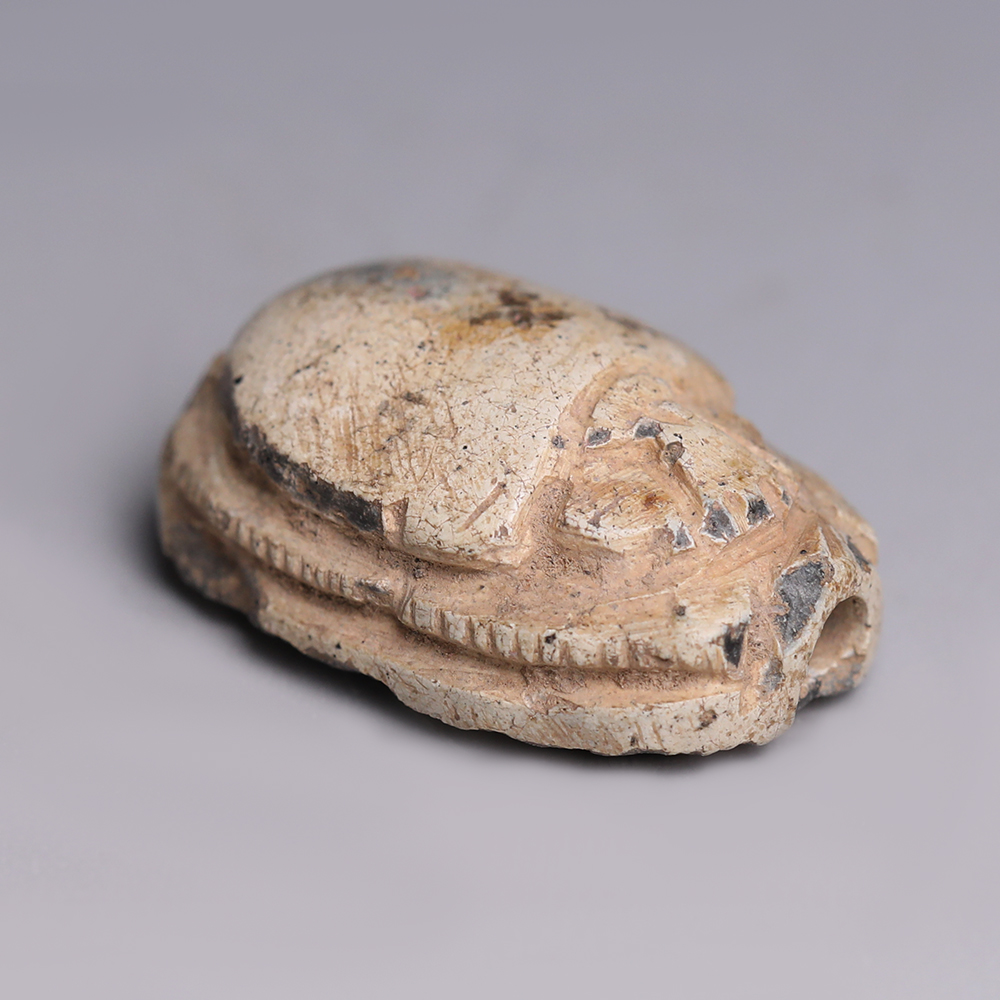The scarab beetle was an exceedingly popular symbol in the art of Ancient Egypt, thought to represent the sun god, Ra. The Ancient Egyptians believed that the scarab beetle rolling its ball of dung across the desert mirrored the journey of the sun across the sky from day to night. As the beetle laid its eggs within the dung, it became a symbol of rebirth and regeneration.
The inclusion of the ‘nefer’ sign could also be interpreted as the ‘sma’ hieroglyph, also described as a windpipe connected to a pair of lungs. It depicts the unification of lower and upper Egypt. The papyrus plant was also the symbol of Lower Egypt. Ironically such themes were commonly represented on scarabs of the Middle kingdom, when Egypt was often not unified.
To find out more about Ancient Egyptian amulets please see our relevant blog post: Egyptian Amulets and their Meanings.



